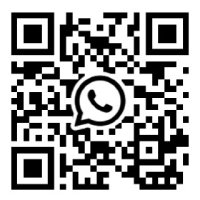The origin and development of QR codes: explore the story behind it
QR codes—those familiar elements of everyday life—play an important role when we use Alipay to make payments, add friends on WeChat, or unlock a shared bike. Billions of people around the world interact with countless QR codes every day. But does that mean we might one day run out of QR codes? The answer is both yes and no. We'll reveal the reasons later. For now, let's delve into the story behind QR codes.
QR codes, also known as two-dimensional barcodes, were developed from traditional one-dimensional barcodes. They use black-and-white rectangular patterns to represent binary data that can be accurately read by a scanning device. In other words, QR codes are an extension of one-dimensional barcodes, offering higher data density and improved readability. One-dimensional barcodes, commonly seen on product packaging like soda cans, use varying widths of bars to encode information such as product details.
The Invention and Evolution of the Barcode
The story of the barcode is one of innovation and development. The technology originated over 70 years ago, first proposed by a young inventor named Norman Woodland in New Jersey, USA. In 1948, he and co-inventor Bernard Silver developed the concept of barcodes and applied for a patent in 1949. Their invention revolutionized product management and later evolved into more advanced recognition technologies, including QR codes.
Woodland and Silver, both young graduate students at Drexel Institute of Technology (now Drexel University) in Philadelphia, embarked on this revolutionary journey in 1948. They were inspired by a local supermarket executive seeking a more efficient method for encoding product data. While the dean showed little interest, Bernard Silver was intrigued and partnered with Woodland to pursue the idea.
Their research faced numerous challenges, including moments of near failure. To fully devote himself to the project, Woodland dropped out of graduate school and returned to his grandparents'home near Miami Beach. One day, while idly drawing circles in the sand on the beach, he was struck by inspiration—the idea of circular barcodes, which laid the foundation for the eventual breakthrough.
Although their barcode invention did not initially see widespread adoption due to limitations in scanning technology at the time, their patent was eventually sold to Philco for $15,000— the only profit they ever made from their invention.
By the summer of 1970, the National Association of Food Chains called for a standardized coding system. Logicon, following a design by IBM engineer George J. Laurer, developed the Universal Grocery Products Identification Code (UGPIC), inspired by Woodland’s earlier designs and improved with his help.
Later, under the guidance of Logicon, the Ad Hoc committee of U.S. supermarkets developed the Universal Product Code (UPC). In 1973, the Uniform Code Council officially established the UPC system and standardized it.
On June 26, 1974, history was made in Troy, Ohio, when a 10-pack of Wrigley's chewing gum became the first product to be scanned with a barcode at a Marsh supermarket. That very pack is now preserved in the Smithsonian National Museum of American History in Washington, D.C., a symbol of technological transformation.
In 1992, Norman Woodland received the U.S. National Medal of Technology and Innovation—the highest honor awarded by the U.S. government for outstanding technical achievements—presented by the President. In 2011, he was inducted into the National Inventors Hall of Fame alongside the late Bernard Silver. Sadly, on December 9, 2012, Woodland passed away peacefully at the age of 91 from Alzheimer's disease and age-related illness.
From Barcodes to QR Codes
Today, barcodes are an essential part of daily life. Over 5 billion barcode scans occur globally each day, spanning logistics, libraries, postal services, banking, and more. So how did QR codes come into being?
QR codes were born out of a need to improve upon one-dimensional barcodes. While simple and easy to read, 1D barcodes could only store limited data based on bar width and were insufficient for encoding more complex information such as URLs and images. To address this, researchers added a second dimension to increase storage capacity—thus inventing the QR code.
The most common type of 2D barcode is the QR code, developed by Masahiro Hara of DENSO WAVE, a subsidiary of the globally renowned automotive parts supplier DENSO.
In the 1980s, barcodes had become essential in manufacturing and retail. But by the 1990s, as production shifted from mass production to more flexible, detail-oriented methods, there was a growing need for more comprehensive production control. According to Hara, this shift was the driving force behind developing the new technology.
Traditional barcodes couldn't store enough information, forcing factories to use multiple barcodes. Workers had to scan thousands each day. Initially, Hara tried to improve the scanner itself, but as components became smaller, he realized the real need was for a compact, high-capacity barcode. With a dedicated team of just two people, Hara led the development of the QR code through relentless effort.
In 2014, Masahiro Hara was awarded the Popular Prize at the European Inventor Awards for his outstanding contribution. DENSO WAVE, though holding the QR code patent, chose to make the technology freely available and did not charge royalties. Instead, they profited by selling QR code scanners.
The QR Code Boom in China
Masahiro Hara was initially unsure whether the QR code would gain widespread adoption. To promote it, he tirelessly traveled to companies and organizations, advocating its use. Thanks to his efforts, the QR code was widely embraced in Japan's corporate sector.
However, the explosive popularity of QR codes in China was not directly Hara's doing—and it's likely that even he did not anticipate the scale of its success there.


